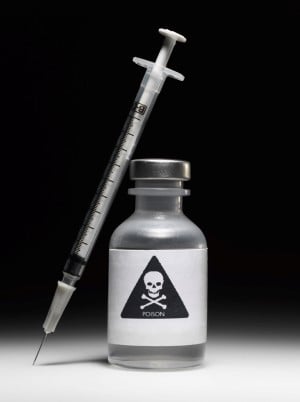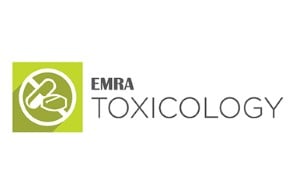The majority of overdose-related fatalities in the United States are currently attributed to synthetic opioids, including fentanyl. The introduction of adulterants into the drug supply is an alarming trend noted by poison control centers across the country. The combination of opioids and adulterants, such as xylazine, is thought to create a potentially more deadly exposure.
Xylazine is an alpha-2 agonist and is used as a veterinary tranquilizer for its analgesic and muscle relaxant properties. When mixed with fentanyl, it is known on the street as “tranq” or “tranq dope.” Xylazine also has been known to be mixed with cocaine, heroin, and other drugs to create deadly cocktails. It can be injected, snorted, swallowed, or inhaled.
Xylazine was first noted to be an adulterant in Puerto Rico in the early 2000s and eventually was used as a drug on its own. Xylazine is often used by drug manufacturers to stretch drug supplies, as it is relatively inexpensive and is known to create similar psychoactive properties. Many users do not know they are consuming xylazine-laced opiates, while some users specifically seek it out.

Due to the relatively recent introduction of xylazine to the U.S. drug supply, there have not been many studies on its effects. Xylazine is known to cause hypertension and tachycardia followed by central nervous system depression, bradycardia, hypotension, and possible death.
Effects can be prolonged, which is why some users seek it out.
Some consumers of xylazine report withdrawal symptoms similar to opiate withdrawal. A multicenter study by Love et al found that opioid overdoses with xylazine exposures were actually less severe than isolated opioid exposures. Both groups in the study had large naloxone requirements, and it is hypothesized that this is due to the CNS depression associated with xylazine that masquerades as opioid overdose.1 Currently, there isn’t an antidote for xylazine overdose.
As of 2021, the northeast region of the United States has seen the greatest increase in xylazine identifications. In 2022, approximately 23% of fentanyl powder and 7% of fentanyl pills seized by the DEA contained xylazine, and xylazine-fentanyl mixtures had been found in 48 out of 50 states.2 Despite xylazine exposures increasing, xylazine is not currently classified as a controlled substance in the U.S. Controlled Substance Act.
Emergency physicians must keep multiple things in mind when treating patients presenting with suspected xylazine exposure. First and foremost, it may be difficult to diagnose xylazine exposure from the ED, as routine urine drug screens do not detect xylazine. Xylazine test strips have been developed recently and are available for patients to test on their own drug supplies. Xylazine can also be detected by chromatography-mass spectrometry testing.
If an exposure to xylazine is suspected, naloxone should be administered to reverse any opiate co-ingestion. Physicians suspecting xylazine exposure are encouraged to report it to the FDA’s MedWatch Adverse Event Reporting Program.
Aside from immediate effects related to xylazine use, patients with a history of xylazine use by injecting the drug are known to develop necrotic skin ulcers, which may appear at areas distant to the site of injection. They are typically large and more rapidly progressive than other types of ulcers. Although the mechanism is not fully understood, it is thought that alpha-2 related effects on peripheral tissues cause vasoconstriction that ultimately leads to skin breakdown. These wounds need to be treated with incision and drainage, antibiotics, and surgical consultation if debridement is necessary.3
Editor's note: This paper was authored by leaders of EMRA’s Toxicology Committee. In addition to xylazine, cases involving medetomidine, another animal tranquilizer, are also rising. Read more about this here.
References
- Love, J. et al. Opioid Overdoses Involving Xylazine in Emergency Department Patients: A Multicenter Study. Clinical Toxicology 2022; 61: 173-180.
- U.S. Drug Enforcement Agency. (n.d.). DEA reports widespread threat of fentanyl mixed with xylazine. DEA. https://www.dea.gov/alert/dea-reports-widespread-threat-fentanyl-mixed-xylazine
- Wei J, Wachuku C, Berk-Krauss J, Steele KT, Rosenbach M, Messenger E. Severe cutaneous ulcerations secondary to xylazine (tranq): A case series. JAAD Case Rep. 2023 Apr 26;36:89-91. doi: 10.1016/j.jdcr.2023.04.016. PMID: 37274146; PMCID: PMC10232457.




